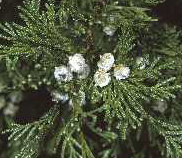 |
On-line Proceedings of the
2009 Atlantic White-Cedar Symposium
The Ecology and Management of
Atlantic White-Cedar (Chamaecyparis thyoides) Ecosystems
A Symposium held on June 9, 10, and 11, 2009 at the
City Hotel and Bistro in Greenville, North Carolina - USA |
Compensation for an Endangered Ecosystem: Restoring and Monitoring Structural Replacement of Atlantic White Cedar Swamps
Robert B. Atkinson, Christopher Newport University, Center for Wetland Conservation; Robert T. Belcher, Malcolm Pirnie Engineering and Consulting; Jeff DeBerry, Geomarine; Jolie M. Harrison, National Marine Fisheries Service; William M. Hester, US Fish and Wildlife Service; Darren T. Loomis, Virginia Department of Conservation and Recreation; Kristen M. Shacochis, Kerr Environmental Services Corp.
Presented by Dr. Robert B. Atkinson
Restoration and monitoring wetland compensation sites typically focuses on structural parameters that are a subset of those used in delineation. As a globally threatened ecosystem with concern for its disappearance dating to 1748, Atlantic White Cedar (cedar) swamps are structurally unique and poorly studied. As such, their restoration may require a more specialized mitigation plan and compliance monitoring scheme than routinely performed at compensation sites. Here we report hydrologic, edaphic, floristic and faunal (mammal, herptile and avifauna) parameters measured at two cedar mitigation sites and six reference sites spanning three age classes. Results suggest that for several parameters, compensation sites did not adequately approximate structure of naturally-regenerated cedar swamps. Similar trends appear among many parameters, and depth and duration of saturation, as well as topography, were identified as important variables that should guide restoration and should be a component for compliance monitoring for this ecosystem. In addition, colonizing vegetation was found to closely predict water table position and may be used to confirm site conditions prior to planting. Attempts to restore cedar provide a valuable opportunity to compensate for historic wetland losses and to improve the science, but there is a need to closely mimic the long duration of saturation and the mound and pool topography that is common in naturally-regenerating cedar swamps.
Proceedings Table of Contents and Conference Links
